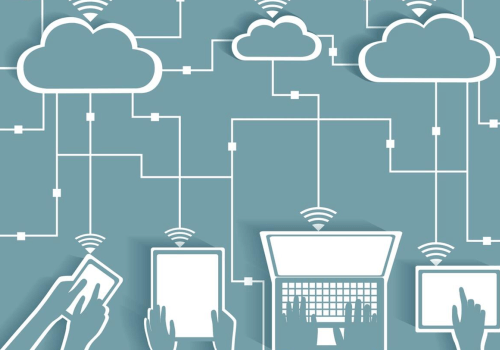Cloud Computing
Cloud computing is a technology that stores and manages data using the internet on remote servers then accessing the data
through the internet. It is the delivery of different services which includes tools and applications like data storage,
servers, databases, networking, and software.
It is a very popular option for people and businesses for a lot of reasons including cost savings, increase productivity,
speed and efficiency, performance, and security. Cloud computing is named like this because the information which is
accessed is found in the cloud which is a virtual space. Companies that provide cloud services enable users to store their
files and applications on these servers and access all the data through the internet. It takes all the lifting involved in
processing data away from the device carry around & also moves all this work to huge computers far away in cyberspace. The
Internet becomes the cloud as data and applications are available from any device with which you can connect to the
Internet, anywhere in the world. Cloud computing can be public and private. Public cloud services provide services over the
Internet for a fee. But private cloud services provide services to a certain number of people only. These services are
systems of networks that supply hosted services.
Types of Cloud Services
1. Email
2. Storage & backup
3. Creating and testing apps
4. Analysing data
5. Audio & video streaming
Cloud computing services are used by a lot of companies and organizations from large corporations to small businesses,
government agencies and also by an individual.
Deployment Models
There are mainly four cloud deployment models that are public, private, community, and hybrid. Each of them is defined
according to the infrastructure for which the environment is located.
1. Private cloud - The cloud infrastructure is operated by a single organization. It is controlled by the organization or a
third party.
2. Community cloud - The cloud infrastructure is shared by many organizations and supports a specific community that shared
concerns. It is also managed by organizations or a third party.
3. Public cloud - The cloud infrastructure which is available for the general or a large number of groups or public but is
owned by an organization that is selling cloud services.
4. Hybrid cloud - The cloud infrastructure is a composition of two or more clouds that is a private, community, or public cloud that have
unique entities but are bound together by standardized technology that enables data portability.
Types of Cloud Computing
1. Software-as-a-service (SaaS) – It is a simplistic way of granting a number of users access to ready-to-use
software. SaaS applications are cloud-based and reached over the Internet using a modern web browser. This method
of accessing software means that the required end number of useful apps is to be accessed from the same user
dashboard through a single browser.
a) Microsoft Office365.
b) Google GSuite.
c) Salesforce.
d) Dropbox.
2. nfrastructure-as-a-service (IaaS) – It involves a method for delivering everything from operating systems to the
server and storage through IP-based connectivity as part of an on-demand service. Clients can avoid the need to
purchase software or servers, and instead procure these resources in an outsourced that is on-demand service.
a) AWS EC2 Instance.
b) Google Cloud VM Instance (Google Compute Engine).
c) Azure Virtual Machine.
d) IBM cloud.
3. Platform-as-a-service (PaaS) – It enables consumers to create environments on-demand for developing, testing,
delivering, and managing software and services. This is an efficient way of creating new websites or mobile
applications, databases, and container clusters as administrators who don’t need to create or manage the wider
infrastructure.
a) AWS Elastic Beanstalk.
b) Google App Engine.
c) Microsoft Azure Web Apps.
d) Google Cloud SQL.
Thanks!
Call Now




